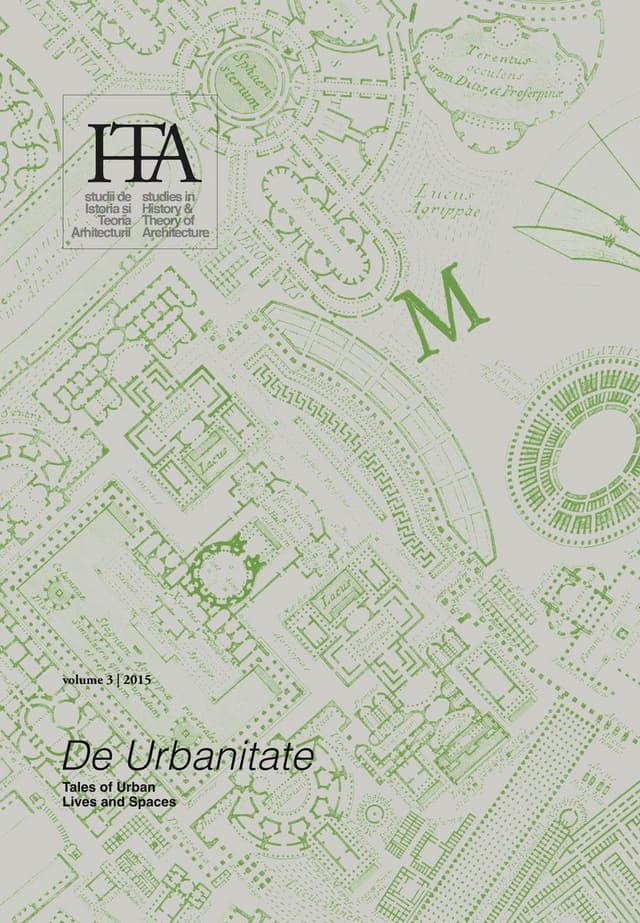… this is something we could dwell on, and create something new, perhaps even more stable in terms of urbanityAn interview with the German architect and urban planner Thomas Sieverts
… this is something we could dwell on, and create something new, perhaps even more stable in terms of urbanity
An interview with the German architect and urban planner Thomas Sieverts
by
Daniela Calciu
&
Thomas Sieverts
Keywords
Thomas Sieverts
Zwischenstadt
new urbanity
Europan
Urbanity (Urbanität) has played a significant role in the definition of urban design over the past few decades, in Germany as well as in Western Europe, in general. Triggered by Edgar Salin’s analysis of the “cities without urbanity” at the eleventh annual meeting of the Association of German Cities (Deutscher Städtetag) in Augsburg in 1960, the concept has accompanied the postmodern renaissance of the traditional city as the setting of the contract for a new life and its corresponding culture. After being employed as the catchword of the failed attempt to plan “urbanity through density” in the newly built ensembles, the word became part of politics, and part of the competition between cities, based on the image of the crowded street, packed with activities, of the 19th century. The 1990s were still governed by these attempts to revive the traditional urbanity, albeit more and more criticized as devoid festivism. However, the industrial decline and the complex changes prompted by the 1989 revolutions turned the attention towards the social and spatial issues outside the historical centers, leading the way to two core ideas that have influenced the urban theories of the new millennium: (1) that the representation of urbanity as a purified image of the pre-industrial times is actually the trap of a nostalgia which has very little to do with the current urban phenomena; and (2) that the new urbanity has to be searched in the ruins of the industrial and the functionalist urbanism, in the informal, alternative, non-conventional territories of the sprawl.
One of the landmarks of this interpretative and operative turn within urban design is undoubtedly Thomas Sieverts’ book Zwischenstadt, literally the city in-between, written in 1995- 1996 and published for the first time in 1997.1 This anti-conservative approach to urbanity seeks to demonstrate that the in-betweenness (between the historical centers and the unlimited land, between the inhabited places and the non-places of mobility, or between the temporality of local economy and the dependency of the global market) is not the source of all evil, but rather the celebration of the possible, uncertain and inciting. Based on his experience as one of the directors of the International Building Exhibition IBA Emscher Park between 1989 and 1994, Sieverts argues against the perpetuation of traditional images of sociability and of spatiality, built upon dualities such as city-territory, nature-culture, etc. The Zwischenstadt does not exist in opposition to another form of ecumene, but it emerges from its own spacing and temporizations, from the variance of its comprising elements. Thus, his examination of the Zwischenstadt begins with the reexamination of some core concepts like urbanity, centrality, density, diversity, and ecology.
Translated into French, English (one in the UK and another one in the US), Japanese, and recently into Spanish, the book is still highly relevant today, inviting us to cherish the casual, and teaching us how to see and make sense of the new urban dynamics. Moreover, Sieverts’ capacity to capture the spirit of change has been highly valuable to the latest editions of Europan Europe, of which he was president until recently. Just as the Zwischenstadt helped mark a cultural and professional turn two decades ago, Europan 13 seems to be really marking a new inflection, not only in the way that we conceive of architectural and urban projects, but also in the methods that we use to make them happen.
In the light of the topic of our current issue, Thomas Sieverts granted me the immense privilege of an interview that tells a little bit about who he is, how the concept and the theme of urbanity have informed his practice as an architect and urban planner, and how he regards it now. At the same time, I was interested in his oppinion on how the professions of architecture and urban design have changed over the past few decades, and how he experienced all those moments of change in his career.
Published in

Chicago citation style
DOI:
10.54508/sITA.3.02
3 / 2015
Introduction. Avatars of an Elusive Concept3 / 2015
… this is something we could dwell on, and create something new, perhaps even more stable in terms of urbanity. An interview with the German architect and urban planner Thomas Sieverts8 / 2020
Introduction. Architectural Aesthetics, Where To?8 / 2020
Maybe We Should Just Stop Using the Word “Architecture”. An interview with Jeremy Till